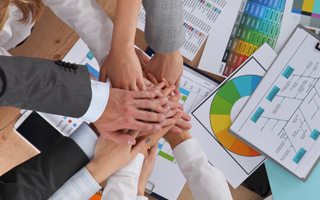Blog Jan. 25, 2019
What is Customer Activation and Why is it Important?
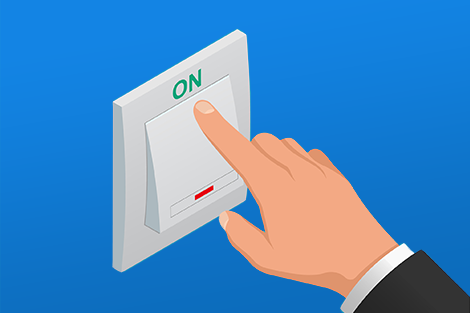
All your customers continuously interact with your brand and jump onto whatever is offered. That’s the dream, especially for marketers. However, it’s frustrating that sometimes even when marketing from left and right, you may still find customers less likely or no longer buying. In order to overcome this situation, you should ask yourself these two questions: How can we keep our customers coming back? And, how can we make them recommend our brand? It’s time to think about customer activation. Let’s discuss what it is, why it is important and how to get started with customer activation.
What is Customer Activation?
Customer activation means motivating customers to move toward the next stage of their customer life cycle faster than they would on their own.
Whether attracting a new customer, re-engaging an inactive one or creating a loyal advocate; every customer has the potential to feel “attached” to your brand. By strategizing your marketing efforts carefully, you will be able to activate these customers – as in making them more actionable. They may visit, purchase, recommend your brand more, and so on.
Why is Customer Activation Important?
Customer activation is an act of motivating customers to completely realize the benefits of the product or services they are testing, hence increasing their overall engagement. the result could be acquiring a new customer or re-engaging an inactive one.
Activating the customer does really matter in order to stop them from ending their buyer’s journey and continue being an active customer. As marketing leaders, you need to identify the factors that stopping your customers from continuing their buyer’s journey. Doing this may influence customers’ movement in their life cycle a step closer to a purchase. Sometimes, customers can move through these stages naturally, but not most of them. This is the reason why marketers keep on strategizing and utilizing customer activation to learn the series of actions that can move customers to the next level of their journey to your business.
In moving your customers through the next stage, it is important to know how to nudge your customer, when to push and when to leave them. To nudge a customer means to draw your customer attention and build engagement towards the next level. To push is intended for making the conversion. It is a definite action such as customers making purchases, registering for events, signing up for new offerings, or referring a friend. Lastly, to leave them is to avoid your customers from being overwhelmed. Being familiar with the concept of customer activation will teach you which of these three actions to take and when.
How to Get Started with Customer Activation
Customer activation is not only about nourishing the relationship between the user and the brand, but also to create an accurate strategy and planning to provide high-quality contents for the customers. You might have an idea who will be your customers, but the best thing to do is to make your insights actionable. It starts with a deeper understanding and knowing your customers well.
Set a Persona for Your Customer
To create an effective customer activation strategy, you must first create buyer personas which represent your target audience. Know your customers’ demographics, behaviors, motivations, needs, and transactions. Conduct interviews with your current customers, prospective customers, and people who interact with customers inside your company. With this, each persona will be able to capture the characteristics of the target group, which can be a useful strategy for improving engagement. Continue learning and understanding how content marketing works for your business by analyzing your customers and identifying what persona they resemble.
Identify and Understand Online Behaviors
Despite the countless number of customers and behaviors to consider, thanks to the internet era, we can now easily track, monitor, and identify customers through their online behavior. Understanding customer behaviors will help you know their interests and preferences. For instance, digging through customers’ activities online can give you information on which certain topics they are concerned about. Hence, you must meet what they are looking for and create tailored contents along with the platform they are using frequently. Most importantly, it will give you an idea of how they will go through with their customer life cycle.
Map the Customer Journey
After defining your personas, you must outline the stages of the customer life cycle.
First, Identify Your Customer Touchpoints
Know your customer touchpoints by listing where and how your customers made contact with your brand. We’ve put together the examples of different touchpoints, please note that the list of your touchpoints will depend on your business model.
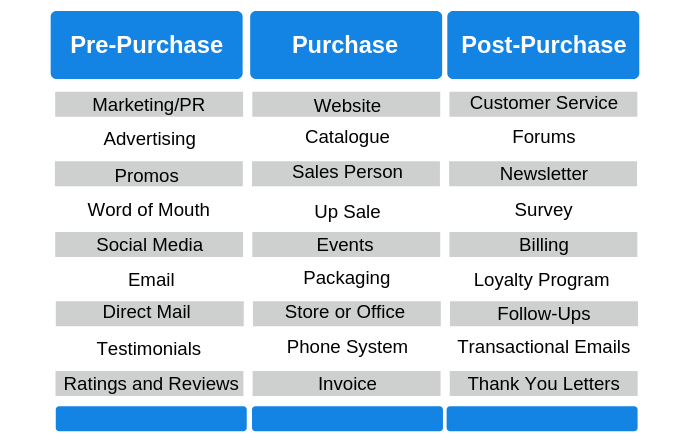
In the table below, map the stages based on the behaviors of the customers that you identified, as well as the channels that they use, and content that they would like to get for every stage. Here are examples of a basic customer journey map.
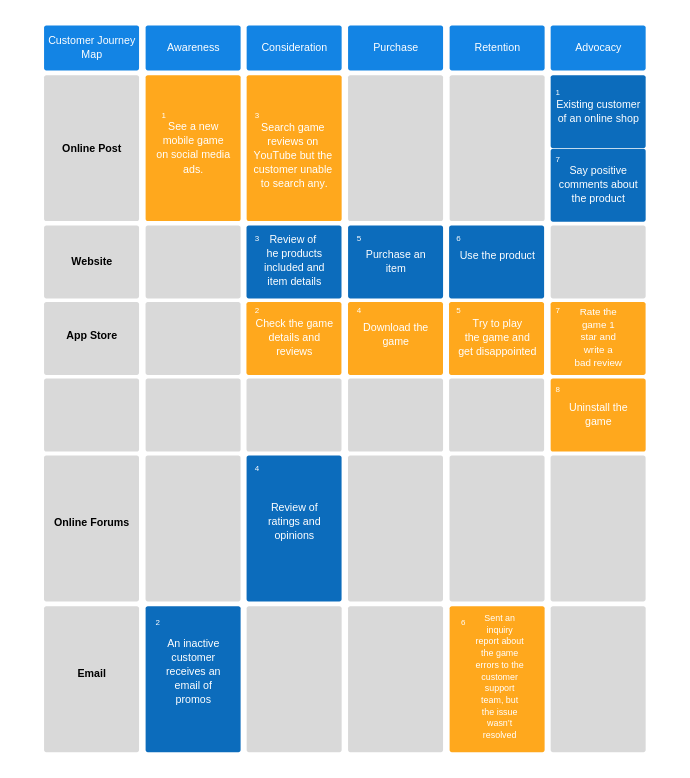
Your audience may have a lot of questions scattered throughout each phase of their customer journey. And, if at any point during their research, they cannot find the answers on your website, they will go to someone else’s site that does have them. Here are the examples of contents you can use to retain such customers:

You can now design your customer activation strategies that will best communicate with your customers based on their customer life cycle stage!
Customer Stage and Speed
After mapping customer life cycles and personas, you may now proceed to identify what kind of information would be relevant by personalizing your contents according to your customers’ stages in their life cycle. You need to address their interests according to their life cycle stages accurately. You need to determine which stage you want to drive customers to, and the ones you want them to avoid.
Try to identify the stages where customers get stuck. For example, there is a stage where some customers become inactive after making their first purchase. In this case, you must find a way to engage them even if they are not buying again yet. You can also find another way to speed up and move your customer through the life cycle. There are marketers who consider that the final stage of the life cycle is to turn their customers into advocates. This stage is where you can make customers share their experiences with your brand to their friends. It is clever because it’s the most cost-effective way to have more customers.
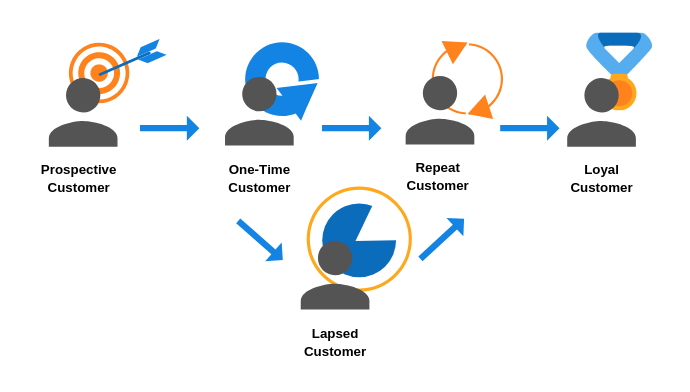
Prospective Customer
This is the awareness stage where you are still reaching out to your prospect. Your prospective customer is not yet familiar with your brand or product and services. These customers are realizing that they have a problem that needs a solution, they start to research and find your brand online.
How to move this customer?
Based on the personas you have created and the behaviors you’ve discovered, you can start attracting them with your marketing strategies. You can create contents that are relevant to your prospective customers. For example, creating free resources such as blog post, videos, infographics, and newsletters. You can also create contents such as promotional deals, advertising, smart giveaways, and catalogues that show your products and services.
One-Time Customer
At this point, you had successfully converted your potential customers into buyers.
How to move this customer?
Just because your customer already purchased your solution, you shouldn’t leave them hanging, what you need to do is to keep proving the value of your product and services.
Lapsed Customer
These are the customers who stop purchasing to your brand.
How to move this customer?
Engage with them don’t let them leave your brand. Reach them by sending emails regarding the new features and updates about your product and services, and push notifications or other promotions with the most attractive offers.
Repeat Customer
These are the customer who had made numerous purchased to your brand and will definitely come back.
How to move this customer?
You must keep on cultivating the relationship between your customer and your brand. In order to move this customer, you need to stay in touch with them by sending updates regarding the new products, features, and promos through marketing emails or newsletter.
Loyal Customer
This is the stage where your customers became your ultimate advocates. As they had been loyal to your brand for a long time, in a way that they keep on buying your product, renewing their subscription, joining customer loyalty programs and keep on recommending your brand to others.
How to keep this customer?
Take care of your relationship with these loyal customers. Appreciate them by giving them rewards that they would like and acknowledge their loyalty by sending them a personalized thank you messages.
Moving Your Customers throughout their Life Cycle with Customer Activation
This digital age allows businesses to get enough customer information in order to understand and provide what they really want. However, even the right data and insights in your hands may become less powerful without the help of the right processes.
To be able to motivate your customers to move forward in their customer life cycle, you must use the right approach. Go through the process of understanding your customers’ persona, behaviors, and life cycles to help you deliver relevant content using the right platforms or channels. It is important to know when to “nudge” or drive engagement, when to “push” customers toward the next stage, and when to leave them alone, to create a good strategy for customer activation.
The drive for creating interactions in order to move customers from one destination to another shouldn’t be left in the palm of customers’ hands. It is better to control the fate of your own business. “Activate” your customers wisely by cultivating a relationship throughout their customer journey and life cycle.


